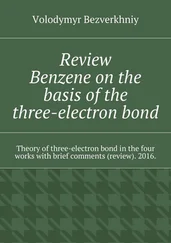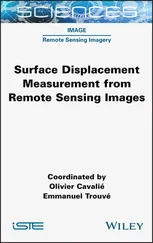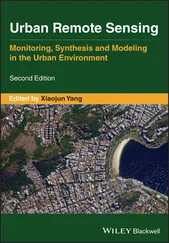Remote C-H Bond Functionalizations
Здесь есть возможность читать онлайн «Remote C-H Bond Functionalizations» — ознакомительный отрывок электронной книги совершенно бесплатно, а после прочтения отрывка купить полную версию. В некоторых случаях можно слушать аудио, скачать через торрент в формате fb2 и присутствует краткое содержание. Жанр: unrecognised, на английском языке. Описание произведения, (предисловие) а так же отзывы посетителей доступны на портале библиотеки ЛибКат.
- Название:Remote C-H Bond Functionalizations
- Автор:
- Жанр:
- Год:неизвестен
- ISBN:нет данных
- Рейтинг книги:3 / 5. Голосов: 1
-
Избранное:Добавить в избранное
- Отзывы:
-
Ваша оценка:
- 60
- 1
- 2
- 3
- 4
- 5
Remote C-H Bond Functionalizations: краткое содержание, описание и аннотация
Предлагаем к чтению аннотацию, описание, краткое содержание или предисловие (зависит от того, что написал сам автор книги «Remote C-H Bond Functionalizations»). Если вы не нашли необходимую информацию о книге — напишите в комментариях, мы постараемся отыскать её.
Remote C—H Bond Functionalizations
Remote C—H Bond Functionalizations
Remote C-H Bond Functionalizations — читать онлайн ознакомительный отрывок
Ниже представлен текст книги, разбитый по страницам. Система сохранения места последней прочитанной страницы, позволяет с удобством читать онлайн бесплатно книгу «Remote C-H Bond Functionalizations», без необходимости каждый раз заново искать на чём Вы остановились. Поставьте закладку, и сможете в любой момент перейти на страницу, на которой закончили чтение.
Интервал:
Закладка:
Chapter 2introduces to the realm of directing group (DG) assisted distal arene meta ‐functionalization. Precise control on regioselectivity is one of the most important aspects in arene C–H functionalization. Arenes bearing heteroatom containing functionality, which is famously known as directing group (DG), were extensively exploited for proximal ortho ‐C–H activation. Extending such DG‐assisted distal meta ‐functionalization strategy required proper template engineering that would ensure the meta ‐selective C–H activation. In this context, Yu and coworkers disclosed a “U”‐shaped template for meta ‐selective alkenylation. Thereafter, Yu, Maiti, Tan, Li, and others embarked on exploring the scope of meta ‐functionalizations employing several templates. Gao and Li have collectively penned down in delineating a monograph on recent development of transition metal‐catalyzed, template assisted distal meta ‐C–H functionalization.
Chapter 3deals with the involvement of the Catellani reaction for distal functionalization of (pseudo)halo arenes. Transition metal‐catalyzed cross‐coupling reactions have revolutionized the art of modern synthesis. While aryl halides or pseudohalides produced ipso ‐functionalized compounds, a new class of reactivity of aryl (pseudo)halide was developed by Catellani utilizing the combination of strained bicyclic olefin, norbornene (NBE), and palladium. A phenylnorbornylpalladium(II) (PNP) dimeric Pd‐catalyst was successfully employed to furnish o , o ′‐disubstituted vinylarenes starting from aryl iodides, alkyl iodide, and olefin in a regioselective manner. This Pd–NBE cooperative catalysis was expanded further for a diverse class of substrates including NH‐indoles and NH‐pyrroles, arenes bearing directing group (DG), and arylboron compounds by several eminent scientists. Several electrophiles were utilized for ortho ‐functionalization, and various nucleophiles were used as terminating reagent for ipso ‐functionalization. In Chapter 3, Juntao Ye and Mark Lautens have provided a vivid description about the development of arene C–H functionalization relying on Pd–NBE catalysis. The discussion was initially focused on the processes initiated with Pd(0) and subsequent discussion was made on the protocols initiated with Pd(II). However, a large part of Chapter 3was devoted in portraying synthetic applicability of the Pd–NBE cooperative catalysis.
The seminal work by Catellani on di‐functionalization of aryl (pseudo)halides evolved in 1997. In later years, enormous efforts have been devoted in expanding the scope of this Pd–NBE cooperative catalysis in a relayed C–H activation process. In this context, Dong and Yu independently pioneered a directing group assisted meta ‐C–H functionalization utilizing the concept of Catellani reaction. An ortho ‐directing group was employed for initial ortho ‐C–H activation and subsequent palladium relay was realized in presence of NBE to accomplish meta ‐selective arene‐C–H functionalizations. While the directing group (DG) assisted C–H functionalization was extensively studied for ortho ‐functionalization, aforementioned seminal reports opened up a new horizon in distal meta ‐C–H functionalization. Cheng and Zhou discussed about the recent advancements on directing group assisted meta ‐selective functionalization of arenes relying on NBE mediated Catellani type reaction. A detailed discussion was made on various functionalizations including alkylation, arylation, alkynylation, chlorination, and amination, which were achieved by anchoring different ortho ‐directing groups such as amides, amines, pyridine, or even free carboxylic acid.
In Chapter 5, a comprehensive summary on ruthenium catalyzed distal meta ‐ and para ‐C–H functionalization was provided by Ackermann and coworkers. In last decades a number of handful synthetic protocols were developed to accomplish remote arene C–H functionalization by Ru‐catalysis. Ru‐catalyzed ortho ‐C–H ruthenation and subsequent ortho ‐functionalization were known in literature over few decades. In a sharp contrast, a unique catalytic reactivity to furnish meta ‐functionalized product from such ortho ‐ruthenated arenes was first observed by Frost and Ackermann in 2011 and 2013, respectively. In later years, Ackermann, Frost, Greaney, Zhang, and others successfully demonstrated a number of useful meta ‐functionalization methods relying on similar strategy. Ru‐catalyzed para ‐selective functionalization was also included in Chapter 5to retrospect the entire spectrum of Ru‐catalyzed remote C–H functionalization.
While Chapters 2– 5of this book were focused on discussing various approaches for distal arene C(sp 2)–H functionalization based on directing group assisted protocols, Catellani reactions, or via arene cyclo‐ruthenation methods, in Chapter 6Phipps and coworkers devoted their efforts in summarizing a complementary strategy for remote arene functionalization harnessing the non‐covalent interactions. Although non‐covalent interactions are prevalent in enzymatic reactions but translating such interaction in regioselective functionalization of small molecule in synthetic scale is rare. Despite the several challenges associated in controlling the site selectivity of arene functionalization, in recent years a number of elegant methods were developed by Smith, Kanai, Phipps, Chattopadhyay, and others. Phipps and his co‐authors illuminated about the emergence of non‐covalent interaction in distal arene‐C–H functionalization in Chapter 6.
Although use of directing group, transient mediator or non‐covalent interactions have been popularized in recent years to harness the regioselective transformation of arenes. However, transition metal‐catalyzed functionalization governed by the steric and/or electronic factors was cultivated over the century to mitigate the issues pertaining to the site‐selectivity. Intrinsic biasness derived from the substituted functionality present in arenes or heteroarenes is considered to be the key component in defining the selectivity. While such strategy, precludes preinstallation of directing group or circumvent the complicated catalytic path involved in NBE mediated process, but were largely limited by the nature of substrate as well as usage of excess amount of arenes. However, prudent combination of catalyst, ligand, and reagent designing has been realized in recent years to enable regioselective functionalization of arenes or heteroarene with broad functional group tolerance. An exemplified discussion of such non‐directed distal arene functionalization is made by van Gemmeren et al. in Chapter 7. The prime attention was paid in depicting the recent progresses on non‐directed distal arene functionalization, where arenes were used as limiting reagent.
In Chapter 8, Dutta and Maiti discussed about the recent progresses in the realm of distal arene para ‐C–H functionalizations. Distinction of energetically comparable C  H bonds to achieve regioselective C–H functionalization is one of prime focus of modern synthesis. In this regard, a number of strategies are known in the literature to perpetrate para ‐selective functionalization. Although electronic controlled Friedel–Crafts reaction being the early examples to promote para ‐C–H functionalization but this strategy is severely restricted with certain substrates and produced ortho ‐functionalized product as an unavoidable side product. Thus, the propulsive thrust in establishing strategies exists, which are not dependent on the electronic properties of the targeted substrate. The use of directing group, steric governance, non‐covalent interactions, and radical initiation is cultivated to expand the scope of arene para ‐C–H functionalization. Chapter 8is aimed to provide a comprehensive and exemplified discussion on directing group assisted, steric controlled, and non‐covalent interactions promoted para ‐functionalizations to enlighten the scope of para ‐selective functionalizations beyond electronic control.
H bonds to achieve regioselective C–H functionalization is one of prime focus of modern synthesis. In this regard, a number of strategies are known in the literature to perpetrate para ‐selective functionalization. Although electronic controlled Friedel–Crafts reaction being the early examples to promote para ‐C–H functionalization but this strategy is severely restricted with certain substrates and produced ortho ‐functionalized product as an unavoidable side product. Thus, the propulsive thrust in establishing strategies exists, which are not dependent on the electronic properties of the targeted substrate. The use of directing group, steric governance, non‐covalent interactions, and radical initiation is cultivated to expand the scope of arene para ‐C–H functionalization. Chapter 8is aimed to provide a comprehensive and exemplified discussion on directing group assisted, steric controlled, and non‐covalent interactions promoted para ‐functionalizations to enlighten the scope of para ‐selective functionalizations beyond electronic control.
Интервал:
Закладка:
Похожие книги на «Remote C-H Bond Functionalizations»
Представляем Вашему вниманию похожие книги на «Remote C-H Bond Functionalizations» списком для выбора. Мы отобрали схожую по названию и смыслу литературу в надежде предоставить читателям больше вариантов отыскать новые, интересные, ещё непрочитанные произведения.
Обсуждение, отзывы о книге «Remote C-H Bond Functionalizations» и просто собственные мнения читателей. Оставьте ваши комментарии, напишите, что Вы думаете о произведении, его смысле или главных героях. Укажите что конкретно понравилось, а что нет, и почему Вы так считаете.












